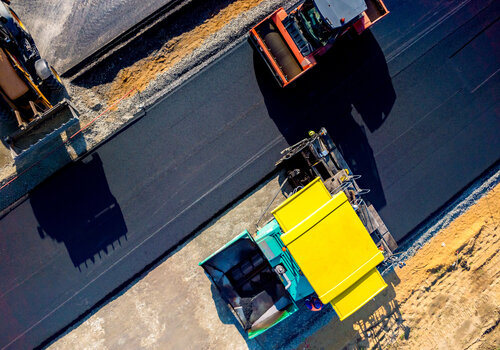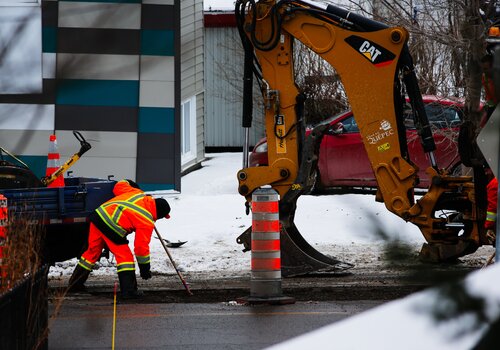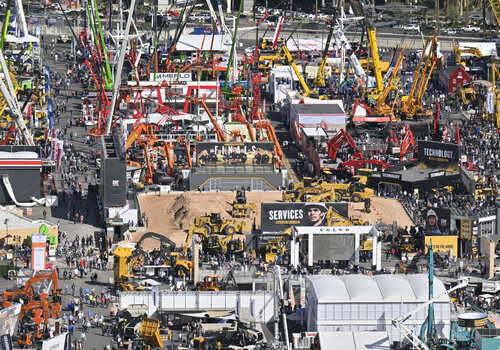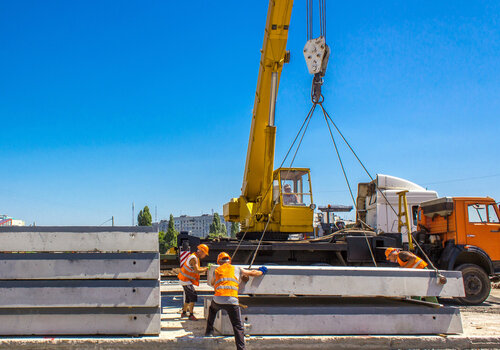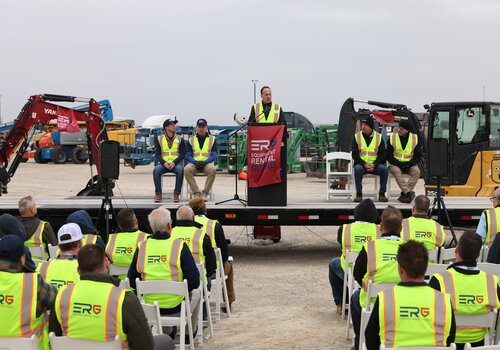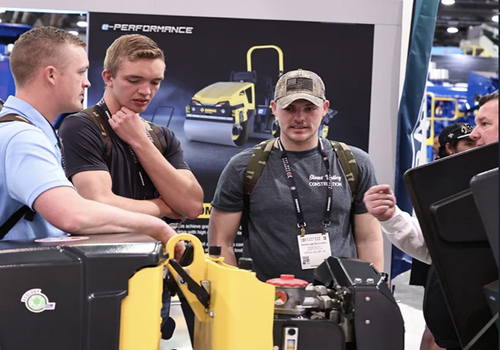A road is being built in mid-summer in a populated city. Residents near the jobsite barely notice the machines. Excavators and compactors hum quietly on electric power that produces little noise or fumes. Machines automatically stop when a hazard is detected.
Advances in autonomy, smarter fleet management and connected jobsite technology are rewriting the future of building roads. For contractors, the question isn’t whether these changes are coming, it’s how to adapt before competitors do.
MARKETSHARE TRENDS
Autonomous bulldozers, pavers and rollers, powered by AI, GPS, and IoT, are boosting efficiency, safety and precision while reducing labor needs.
The market was valued at more than 12.72 billion and is projected to more than double to 27.61 billion by 2032, growing at nearly 9% annually. This rapid expansion reflects advances in automation and AI, along with a global shortage of skilled labor, which are driving adoption across the industry.
ELECTRIC MACHINES ON THE JOBSITE
Contractors know fuel costs eat margins fast. That’s why electric machines from compactors to skid steers are gaining attention. In 2025, equipment analysts consistently list electric and hybrid fleets as top industry trends, citing emissions goals and noise restrictions in urban projects.
The opportunity? Crews can work longer hours in neighborhoods or near hospitals without noise complaints. The challenge? Charging logistics, run time and upfront costs. That means smart contractors are piloting electric gear on smaller scopes like sidewalk rehab, cul-de-sac milling or airport tarmacs to measure productivity before going all-in.
MACHINES THAT PREDICT THEIR OWN FAILURES
Every project manager has felt the pain of a paver breaking down mid-shift. Telematics has long been a buzzword, but the new wave is different: machines outfitted with sensors that predict failures before they happen. Southeastern Equipment calls this one of the top shifts of 2025, pointing to GPS-based fleet tracking, idle time reports, and AI-driven maintenance alerts that keep jobs moving.
Imagine a roller pinging your phone: “Hydraulic pump trending toward failure in 40 hours, order replacement now.” That’s not sci-fi anymore. For contractors, it means stocking the right parts, cutting down time and saving the lost day (or more) waiting for repairs.
AUTONOMY ON THE HIGHWAY
Autonomy isn’t limited to Tesla cars. Road equipment is starting to steer, grade and even haul itself. Caterpillar, for instance, is working with LiDAR suppliers to integrate sensors into heavy machines, expanding its Cat® Command platform for safer, semi-autonomous operations.
BOMAG’s Emergency Brake Assist for its AP-5 tandem rollers uses multi-level LiDAR to continuously scan the surroundings, even detecting obstacles around corners. The system automatically applies graduated braking, gentle or firm, depending on the risk, while protecting the asphalt surface.
THE COST OF CHANGE
Even with shiny new tech, contractors can’t ignore costs. Highway construction inflation means every dollar buys less than it used to. The Bureau of Transportation has warned that price increases could shrink the impact of IIJA highway funding.
This is coming as the cost of construction materials is expected to continue rising in 2025 and beyond.
Retrofitting equipment allows you to start using the technology needed to stay current in the construction industry while keeping the machines you’re already familiar with, while reaping the many benefits of automation and data collection.
5 WAYS CONTRACTORS CAN PREPARE
So, what should you do if you’re leading a paving or highway crew today?
-
Pilot, don’t plunge. Start with one or two electric machines on small projects. Measure uptime, operator feedback and charging logistics.
-
Use your data. If you’ve already got telematics, mine it. Look at idle hours, breakdowns and patterns that could shape smarter purchases.
-
Train your crew. Technology is only as strong as the people running it. Run short sessions using semi-autonomous guidance or predictive alerts.
-
Talk to owners. Agencies increasingly want “greener” or smarter equipment. Ask if specs allow (or reward) lower-emission or sensor-ready machines.
-
Stay flexible. Blend new tech with reliable legacy gear. Being future-ready doesn’t mean scrapping what already works.
LOOKING FIVE YEARS DOWN THE ROAD
By 2030, the hum of battery-powered rollers and GPS-guided pavers may be as normal as the beep-beep of a reversing loader is today.
Road construction equipment is no longer just iron and hydraulics. It’s software, sensors, diagnostics and connectivity. The next decade’s winners will be the contractors who adapt early to strategically pilot, scale and integrate these advances.
Learn about the latest equipment trends and hear from experts about industry changing technology at CONEXPO-CON/AGG 2026 in the session Smarter Quarries: AI Solutions Powering the Future of Aggregates.
Photo credit: SHUTTERSTOCK/STOCKR

